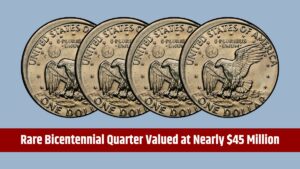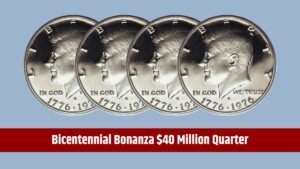You might be surprised to learn that some of the coins in your pocket change, coin jars, or old collections could be worth hundreds—or even thousands—of dollars. Certain coins with unique features, minting errors, or rare compositions hold immense value among collectors. Let’s cut into five such coins and how to identify them.
1955 Doubled Die Lincoln Penny
This famous penny features a distinct doubling effect on the obverse. The doubling is most noticeable on the date (“1955”) and the inscriptions “In God We Trust” and “Liberty.”
Estimated Value:
- Coins in circulated condition: $500–$1,500
- Mint State (MS) examples: $2,000+
Where to Find It:
Search through old rolls of pennies, jars of change, or inherited collections. Since the 1955 penny was widely circulated, one might still surface in everyday change.
1969-S Lincoln Penny (Doubled Die)
This penny, minted in San Francisco, also exhibits a doubling effect. Look closely at the date, “1969,” and Lincoln’s eye and cheek for noticeable doubling.
Estimated Value:
- Circulated coins: $500–$3,000
- Mint State examples: $5,000+
Where to Find It:
Check your loose change and older penny collections. If you suspect you’ve found one, consider having it authenticated by a professional service like PCGS or NGC.
1982 Copper Lincoln Penny
In 1982, the U.S. Mint switched from copper to zinc pennies. A copper penny from this year weighs 3.11 grams, while zinc pennies weigh 2.5 grams. Use a scale to distinguish between the two compositions.
Estimated Value:
- Copper pennies in circulated condition: $500–$1,000
- Pristine examples: $2,000+
Where to Find It:
Look through your change or penny jars, especially if they contain coins from the early 1980s. A small digital scale is an invaluable tool for identifying these rarities.
2004 Wisconsin State Quarter (Extra Leaf)
This quarter, part of the 50 State Quarters program, has a unique minting error: an extra leaf appears on the corn stalk. Inspect the corn closely for this additional detail, which can be either a “high” or “low” leaf.
Estimated Value:
- Circulated condition: $500+
- Mint State (MS) examples: $1,200+
Where to Find It:
Search through your collection of state quarters or any loose change. These quarters are rare but might be lurking among recently circulated coins.
2019-W American Eagle One Ounce Silver Coin
This silver coin was minted at the West Point Mint and features the “W” mintmark on the reverse. Issued in limited quantities, it was distributed exclusively to attendees of the ANA World’s Fair of Money.
Estimated Value:
- Uncirculated coins: $500+
- High-grade examples (MS70): $1,500–$2,000
While unlikely to be found in regular pocket change, this coin may be hidden in inherited collections or among items acquired from auctions or estate sales.
Coins are more than just spare change—they can be hidden treasures with significant historical and monetary value. By closely inspecting your coins for unique features like doubling errors, rare mintmarks, or unusual weights, you could uncover a gem worth hundreds or even thousands of dollars. If you think you’ve found a valuable coin, consider having it professionally graded to confirm its authenticity and maximize its market value.
FAQs
How can I spot a 1955 Doubled Die Penny?
Look for doubling on the date and inscriptions, especially ‘1955.’
What makes the 1969-S Penny valuable?
It features a doubled die error on the date and Lincoln’s features.
How do I identify a 1982 Copper Penny?
Weigh it—copper pennies weigh 3.11 grams, while zinc ones weigh 2.5 grams.
Where can I find the Wisconsin ‘Extra Leaf’ Quarter?
Search state quarters for an extra leaf on the corn stalk design.
What is special about the 2019-W Silver Eagle Coin?
Its limited mintage and ‘W’ mintmark make it highly collectible.



